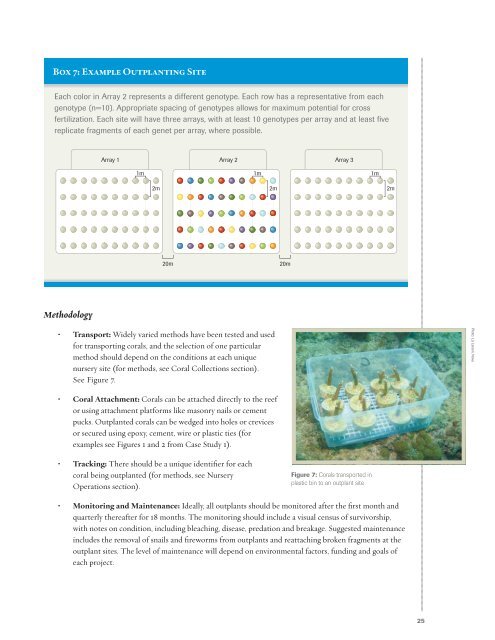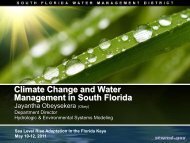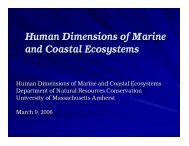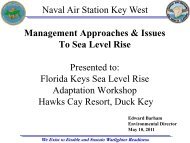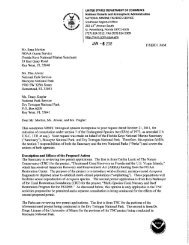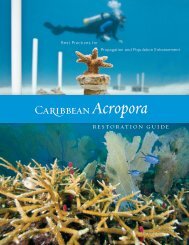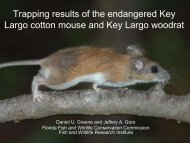Caribbean Acropora Restoration Guide - The Florida Reef ...
Caribbean Acropora Restoration Guide - The Florida Reef ...
Caribbean Acropora Restoration Guide - The Florida Reef ...
Create successful ePaper yourself
Turn your PDF publications into a flip-book with our unique Google optimized e-Paper software.
Box 7: Example Outplanting Site<br />
Each color in Array 2 represents a different genotype. Each row has a representative from each<br />
genotype (n=10). Appropriate spacing of genotypes allows for maximum potential for cross<br />
fertilization. Each site will have three arrays, with at least 10 genotypes per array and at least five<br />
replicate fragments of each genet per array, where possible.<br />
Array 1 Array 2 Array 3<br />
1m<br />
1m<br />
1m<br />
2m<br />
2m<br />
2m<br />
20m<br />
20m<br />
Methodology<br />
• Transport: Widely varied methods have been tested and used<br />
for transporting corals, and the selection of one particular<br />
method should depend on the conditions at each unique<br />
nursery site (for methods, see Coral Collections section).<br />
See Figure 7.<br />
Photo: Liz Larson, Nova<br />
• Coral Attachment: Corals can be attached directly to the reef<br />
or using attachment platforms like masonry nails or cement<br />
pucks. Outplanted corals can be wedged into holes or crevices<br />
or secured using epoxy, cement, wire or plastic ties (for<br />
examples see Figures 1 and 2 from Case Study 1).<br />
• Tracking: <strong>The</strong>re should be a unique identifier for each<br />
coral being outplanted (for methods, see Nursery<br />
Operations section).<br />
Figure 7: Corals transported in<br />
plastic bin to an outplant site<br />
• Monitoring and Maintenance: Ideally, all outplants should be monitored after the first month and<br />
quarterly thereafter for 18 months. <strong>The</strong> monitoring should include a visual census of survivorship,<br />
with notes on condition, including bleaching, disease, predation and breakage. Suggested maintenance<br />
includes the removal of snails and fireworms from outplants and reattaching broken fragments at the<br />
outplant sites. <strong>The</strong> level of maintenance will depend on environmental factors, funding and goals of<br />
each project.<br />
25


